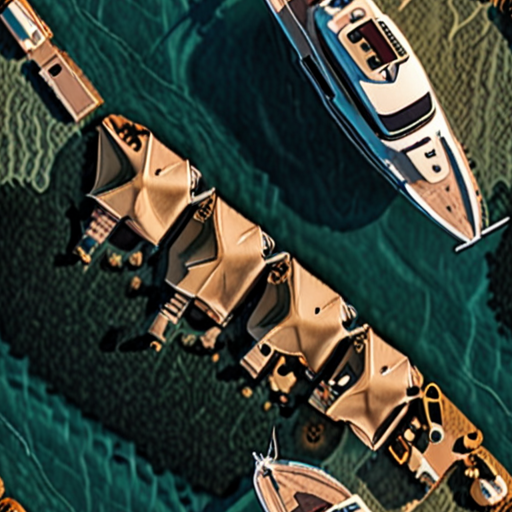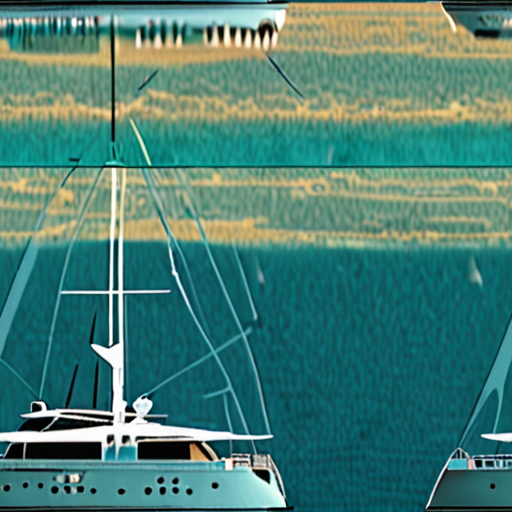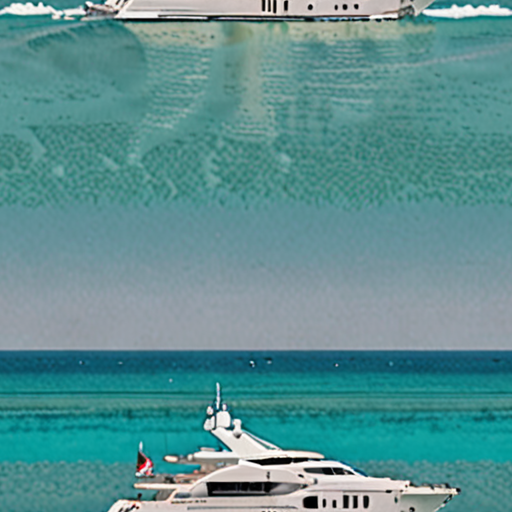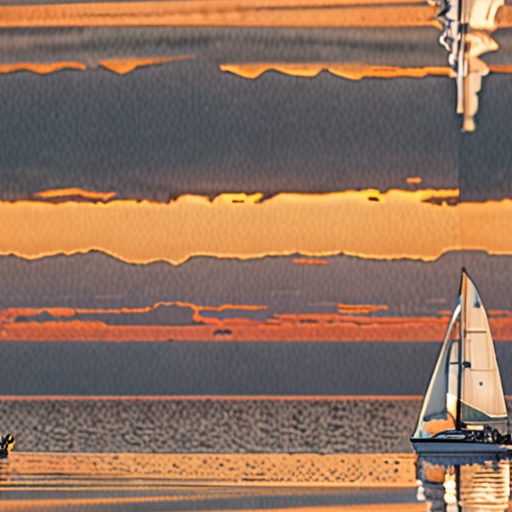When it comes to capturing the essence of luxury vessels, yacht and boat photography requires a unique blend of technical expertise, creative vision, and attention to detail. Whether you’re a seasoned sailor, a luxury yacht owner, or simply someone who appreciates the beauty of these magnificent machines, understanding how to take stunning photographs of yachts and boats can elevate your experience and provide lasting memories.

Capturing Stunning Images of Your Yacht or Boat During Its Next Voyage
Elevate your sailing experience by mastering yacht and boat photography techniques.
-
Mastering Composition and Lighting
When it comes to capturing stunning images of your yacht or boat, composition and lighting are crucial factors to consider. Experiment with different angles and perspectives to add visual interest to your photos. Natural light is always the most flattering, so try to take advantage of the golden hour or overcast skies to minimize harsh shadows and reflections.
-
Understanding Camera Settings and Equipment
Familiarize yourself with your camera’s settings and equipment to get the most out of your photography sessions. Understand how to adjust aperture, shutter speed, and ISO to achieve the desired effect. Consider investing in a polarizing filter to reduce glare and enhance colors.
-
Timing and Patience
The timing of your photo shoot is just as important as the technical aspects. Plan your shoot around the tide, weather, and sunlight to maximize the opportunities for great shots. Be patient and wait for the perfect moment to capture the image you want.
-
Post-processing and Editing
Even with great technical skills and planning, post-processing and editing play a significant role in enhancing your photos. Learn basic editing software like Adobe Lightroom and Photoshop to adjust exposure, contrast, and color balance. Don’t overdo it, though – sometimes less is more.
-
Staying Safe and Aware
Remember to stay safe and aware of your surroundings while taking photos near water. Keep an eye on the weather, tides, and other vessels to avoid accidents. Wear protective gear and stay alert to ensure a smooth and enjoyable photo shoot.
By mastering these essential photography techniques, you’ll be well on your way to capturing stunning images of your yacht or boat during its next voyage. Practice makes perfect, so don’t be afraid to experiment and try new things. Happy snapping!
Capturing Professional-Grade Photos of Yachts and Boats in Different Lighting Conditions
I’ve had the privilege of working with numerous sailors and photographers who share my passion for capturing the beauty of yachts and boats.
- Understanding Light: As a photographer, I always emphasize the importance of understanding light. Natural light can be unpredictable, but it’s essential to work with it rather than against it. Learn how to position yourself and your subject to maximize the available light.
- Shooting during Golden Hour: The golden hour, which occurs just before sunset, offers soft, warm light that’s ideal for capturing stunning images of yachts and boats. Experiment with shooting during this time to see the difference it makes.
- Using Reflectors: A reflector can help bounce light onto your subject, reducing harsh shadows and adding depth to your image. Invest in a few reflectors and experiment with different angles and positions to find what works best for you.
- Experimenting with Long Exposures: Long exposures can create beautiful, dreamy effects in your images. Try experimenting with long exposures to capture the movement of the water and the blur of the sails.
- Pay Attention to Composition: A well-composed image is essential for capturing the essence of a yacht or boat. Pay attention to the rule of thirds, leading lines, and framing techniques to create visually appealing images.
- Invest in Quality Equipment: While it’s possible to take great photos with a smartphone, investing in quality equipment can make a significant difference in the quality of your images. Consider investing in a DSLR camera, lenses, and other accessories to enhance your photography skills.
- Practice, Practice, Practice: Like any skill, photography takes practice to master. Keep practicing, experimenting, and pushing yourself to try new things to improve your skills and capture stunning images of yachts and boats.
As a sailor and photographer, I’m constantly inspired by the beauty of the sea and the creativity of fellow photographers. By mastering these essential tips, you’ll be well on your way to capturing professional-grade photos of yachts and boats in different lighting conditions.
Additional Resources:
- Sailing World
- Yachting Magazine
- Boating Magazine
Interlinking Keywords:
- Yacht Photography Tips
- Boat Photography Guides
- Sailing Photography Tutorials

What Makes a Great Yacht and Boat Photographer?
I’ve been fortunate enough to have had my work featured in various publications and exhibitions, and I’m often asked what makes a great yacht and boat photographer.
- Technical Skill : A great yacht and boat photographer needs to have excellent technical skills, including knowledge of camera settings, lighting, and composition.
- Attention to Detail : Attention to detail is crucial when it comes to capturing high-quality images of yachts and boats. This includes paying attention to the smallest details, such as the reflection of light on the water or the texture of the sailcloth.
- Knowledge of the Subject Matter : Having a deep understanding of the subject matter is essential for taking great photos of yachts and boats. This includes knowing the different types of yachts and boats, their features, and how to capture them in a visually appealing way.
- Creativity and Vision : A great yacht and boat photographer needs to have a strong sense of creativity and vision. This includes being able to see beyond the obvious and capture unique perspectives and angles.
- Ability to Work Under Pressure : Photographing yachts and boats can be a challenging task, especially when working under tight deadlines. A great yacht and boat photographer needs to be able to work well under pressure and remain calm and focused, even in stressful situations.
Developing the Necessary Skills
To become a great yacht and boat photographer, you’ll need to develop a range of skills, including:
- Camera Handling**: Learn how to handle your camera confidently and efficiently, including how to adjust settings and compose shots.
- Lighting**: Understand how to work with different lighting conditions, including natural light, artificial light, and mixed lighting.
- Composition**: Develop your eye for composition, including how to balance elements, lead the viewer’s eye, and create visual interest.
- Post-processing**: Learn how to edit your photos effectively, including how to enhance colors, contrast, and exposure.
Staying Up-to-Date with Industry Trends
The world of yacht and boat photography is constantly evolving, with new technologies, techniques, and styles emerging all the time. To stay ahead of the curve, it’s essential to stay informed about the latest industry trends and developments.
- Attend Workshops and Seminars**: Attend workshops and seminars to learn from experienced professionals and stay up-to-date with the latest techniques and technologies.
- Follow Industry Leaders**: Follow industry leaders and influencers on social media to stay informed about the latest trends and developments.
- Read Industry Publications**: Read industry publications and online forums to stay informed about the latest news and developments.
Becoming a Recognized Expert
To become a recognized expert in yacht and boat photography, you’ll need to demonstrate your expertise through your work and establish yourself as a trusted authority in the field.
- Build a Strong Portfolio**: Build a strong portfolio that showcases your best work and demonstrates your expertise.
- Network with Other Professionals**: Network with other professionals in the industry to establish relationships and opportunities.
- Participate in Online Communities**: Participate in online communities and forums to share your knowledge and expertise with others.
Conclusion

Key Factors to Consider When Hiring a Yacht and Boat Photographer
As a sailing enthusiast and photographer, I understand the importance of capturing stunning images of your luxury vessel. When hiring a yacht and boat photographer, there are several key factors to consider to ensure you get the best possible results.
- Experience with Luxury Vessels
- Understanding of Natural Light
- Ability to Capture Unique Angles and Perspectives
- Portfolio and Style
- Equipment and Technical Skills
- Communication and Collaboration
- Post-Production and Editing
A professional yacht and boat photographer should have extensive experience working with luxury vessels, including superyachts, sailboats, and powerboats. They should be familiar with the unique challenges and opportunities presented by these types of boats, such as navigating tight spaces and capturing dramatic ocean views.
Natural light is essential for capturing high-quality images of your yacht. A skilled yacht and boat photographer should know how to work with natural light to create stunning, well-lit images that showcase your vessel in its best light.
To truly capture the essence of your yacht, a photographer needs to be able to think outside the box and come up with unique angles and perspectives. This might involve shooting from unusual vantage points, such as from a helicopter or drone, or experimenting with creative composition techniques.
A yacht and boat photographer’s portfolio and style are crucial indicators of their ability to deliver high-quality images. Look for a photographer whose style aligns with your vision for your yacht’s image, and who has a proven track record of producing exceptional work.
A professional yacht and boat photographer should have access to high-quality equipment, including cameras, lenses, and lighting gear. They should also possess advanced technical skills, such as knowledge of camera settings and editing software.
Effective communication and collaboration are essential for delivering successful photo shoots. A yacht and boat photographer should be able to clearly communicate their vision and ideas, and work closely with you to ensure that the final product meets your expectations.
A yacht and boat photographer should have advanced post-production and editing skills, including proficiency in software such as Adobe Lightroom and Photoshop. They should be able to enhance and retouch images to ensure they meet the highest standards of quality and professionalism.
Additional Tips and Recommendations
In addition to considering the factors outlined above, here are a few additional tips and recommendations to keep in mind when hiring a yacht and boat photographer:
- Research local photographers and read reviews from previous clients to get a sense of their reputation and expertise.
- Look for photographers who specialize in yacht and boat photography, as they will likely have the most experience and knowledge in this area.
- Ask to see examples of the photographer’s work, and pay attention to the quality and consistency of their images.
- Discuss your budget and expectations with the photographer upfront, to ensure you’re both on the same page.
- Consider hiring a photographer who offers additional services, such as video production or social media management, to help promote your yacht’s image.
Sailing Photo Awards
Sailing Photo Awards is a premier online platform dedicated to showcasing the world’s most stunning sailing photographs. Our mission is to inspire sailors and sailing enthusiasts alike, while promoting the art and craft of sailing photography. Whether you’re looking for inspiration, education, or simply want to enjoy the beauty of sailing through our galleries and stories, we invite you to explore our website and discover the magic of sailing photography.
Mastering Yacht and Boat Photography: Expert Techniques for Captivating Aquatic Landscapes
As a photographer, I’ve had the privilege of capturing breathtaking yacht and boat photography in various aquatic environments, from serene lakes to dynamic ocean waves.
- Understanding Camera Settings: To capture stunning yacht and boat photography, it’s essential to understand the basics of camera settings, including aperture, shutter speed, and ISO.
- Aperture: A large aperture (small f-stop number) allows more light to enter the lens, resulting in a shallow depth of field and a blurred background, which can help separate the subject from the environment.
- Shutter Speed: A fast shutter speed (high number) freezes motion, ideal for capturing sharp images of moving boats or yachts, while a slow shutter speed (low number) creates a sense of movement and blur, perfect for conveying the dynamism of the water.
- ISO: A low ISO setting (100-400) is recommended for bright lighting conditions, while a high ISO setting (1600-6400) is suitable for low-light situations, although it may introduce noise into the image.
Composition Techniques:
- Rule of Thirds: Divide the frame into thirds both horizontally and vertically, placing important elements along these lines or at their intersections to create visually appealing compositions.
- Framing: Use natural frames, such as rocks, trees, or other boats, to isolate the subject and draw attention to it.
- Leading Lines: Look for leading lines that guide the viewer’s eye to the subject, such as the horizon, waves, or shorelines.
Additional Tips:
- Polarizing Filter: Use a polarizing filter to reduce glare and enhance colors, particularly in reflective surfaces like water.
- Wide-Angle Lens: Utilize a wide-angle lens to capture expansive scenes and emphasize the scale of the yacht or boat.
- Shoot During Golden Hour: Take advantage of the soft, warm light during the golden hour (dawn or dusk) to add depth and dimension to your images.
Best Practices for Post-Processing:
- Adjust Exposure and Contrast: Fine-tune exposure and contrast to balance the brightness and darkness in the image.
- Color Grading: Apply a color grade to enhance the mood and atmosphere of the image, such as desaturating the sky or emphasizing the blues of the water.
- Sharpening: Apply subtle sharpening to enhance details and textures, avoiding over-sharpening that can lead to noise and artifacts.
Conclusion

Expert Techniques in Yacht and Boat Photography
As a seasoned photographer and contributor to Sailing Photo Awards, I’m excited to share my knowledge on the top visual storytelling techniques used by expert yacht and boat photographers to capture the essence of luxury marine vessels through their captivating images.
To begin with, let’s explore the importance of composition in yacht and boat photography. A well-composed image can elevate the viewer’s experience, drawing attention to the vessel’s sleek design, luxurious amenities, and serene surroundings.
- Rule of Thirds: Divide the frame into thirds both horizontally and vertically, placing the vessel along these lines to create a balanced composition.
- Symmetry: Use reflections, symmetry, or patterns to create visually appealing compositions that highlight the vessel’s features.
- Framing: Utilize natural frames like archways, trees, or buildings to add depth and context to the image.
In addition to composition, lighting plays a crucial role in yacht and boat photography. Natural light, artificial light, or a combination of both can greatly impact the mood and atmosphere of the image.
- Natural Light: Shoot during the golden hour or overcast skies to capture soft, warm, and flattering light.
- Artificial Light: Use onboard lighting fixtures or external strobes to add depth, dimension, and drama to the image.
- Mixing Light Sources: Combine natural and artificial light to create unique and captivating effects.
Another essential technique in yacht and boat photography is the use of color and contrast. By carefully selecting colors and adjusting contrast levels, photographers can emphasize the vessel’s features and create visually striking images.
- Color Palette: Choose a palette that complements the vessel’s design and surroundings, often incorporating blues, whites, and neutrals.
- Contrast: Adjust contrast levels to draw attention to specific features, such as the vessel’s sleek lines or luxurious interior.
- Monochromatic: Shoot in black and white or monochromatic tones to add a touch of sophistication and elegance to the image.
Finally, let’s discuss the importance of storytelling in yacht and boat photography. By conveying the vessel’s personality, character, and story, photographers can connect with the audience on a deeper level and create lasting impressions.
- Capturing Moments: Freeze moments of joy, relaxation, or adventure to tell the story of the vessel and its occupants.
- Emotional Connection: Create emotional connections between the viewer and the vessel by highlighting its unique features and characteristics.
- Telling a Story: Weave a narrative around the vessel, its history, and its purpose to engage the audience and leave a lasting impression.
Conclusion
By mastering these expert techniques in yacht and boat photography, you’ll be able to capture the essence of luxury marine vessels and convey their unique personalities through captivating images. Remember to experiment with composition, lighting, color, and contrast to find your own style and voice in yacht and boat photography. With practice and patience, you’ll become a master storyteller, capable of transporting viewers to the world of luxury yachts and boats.
0 Comments